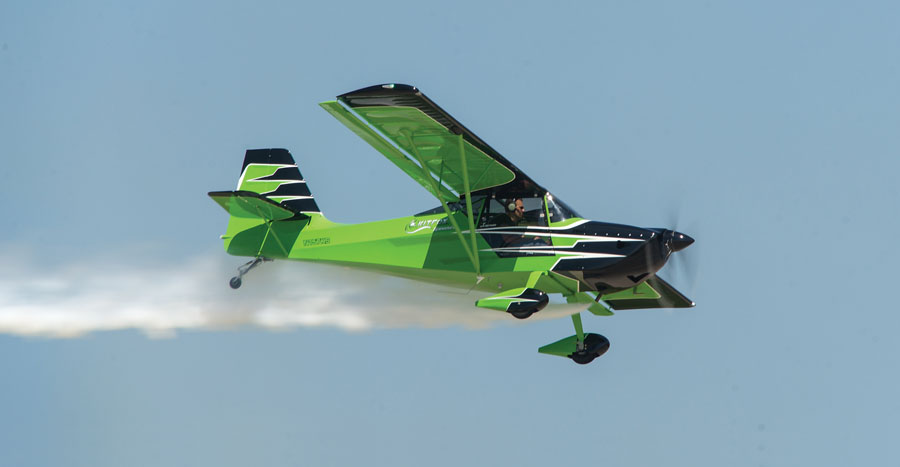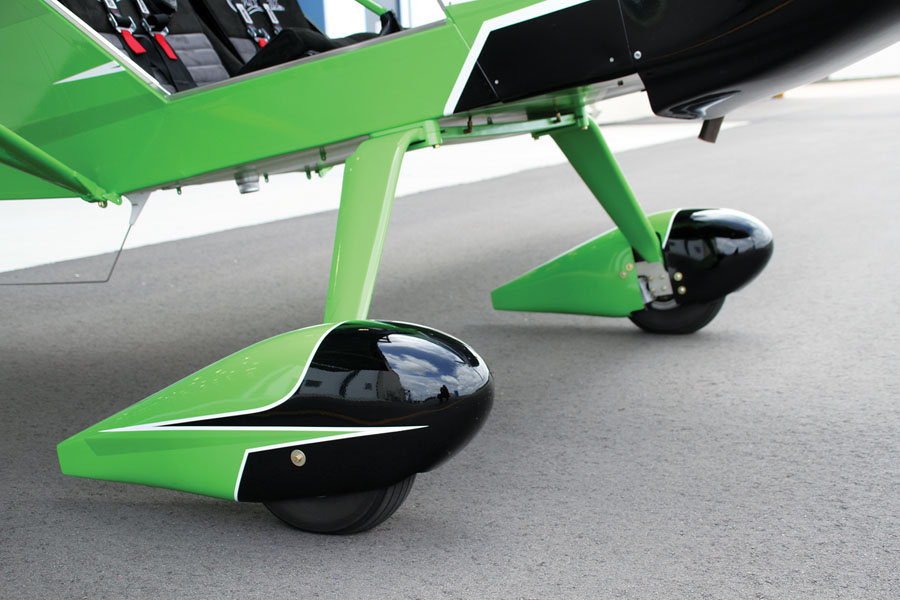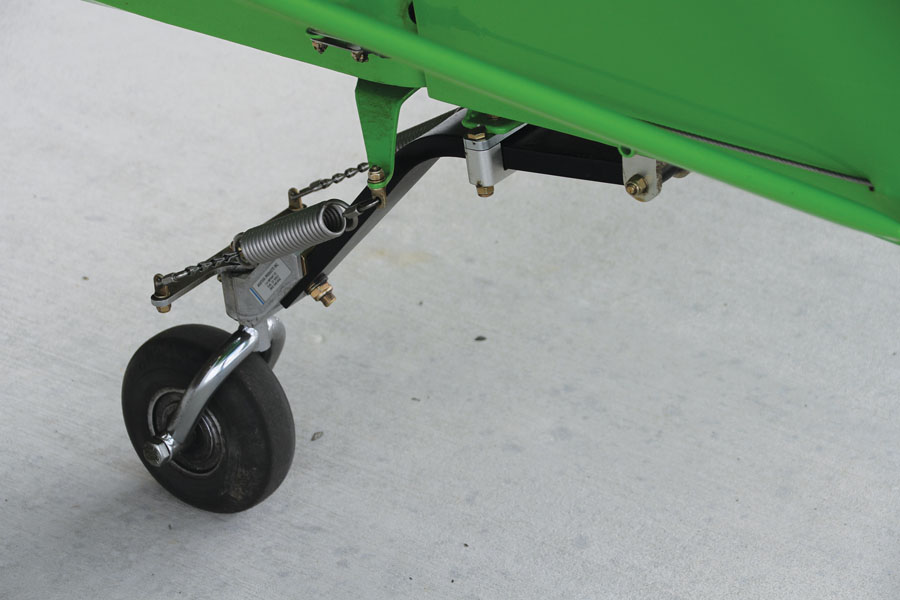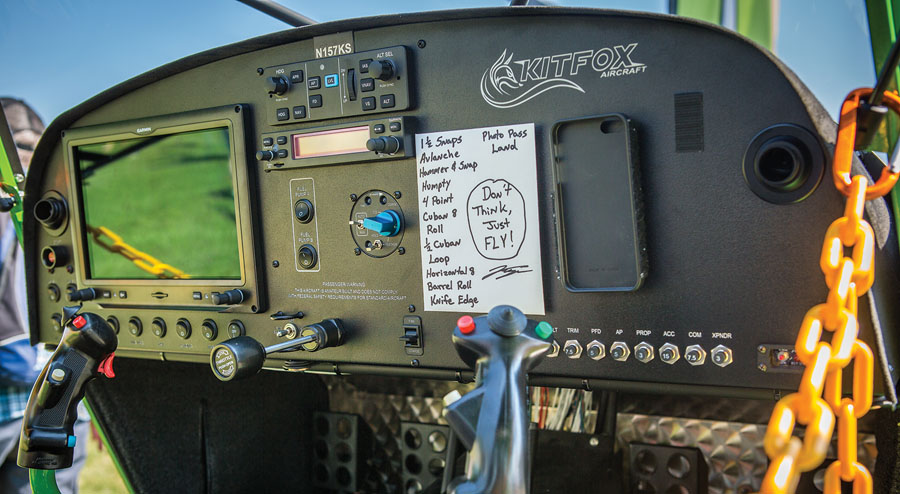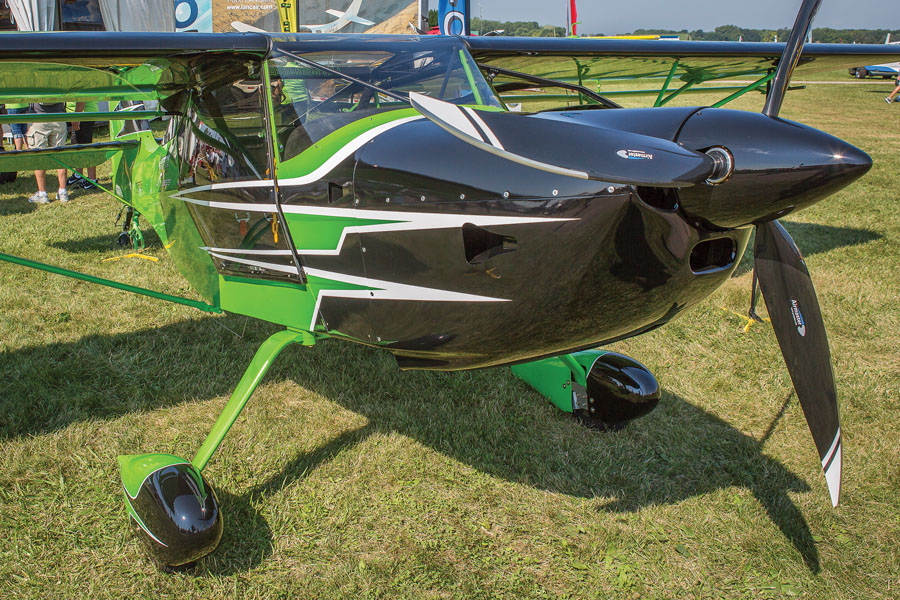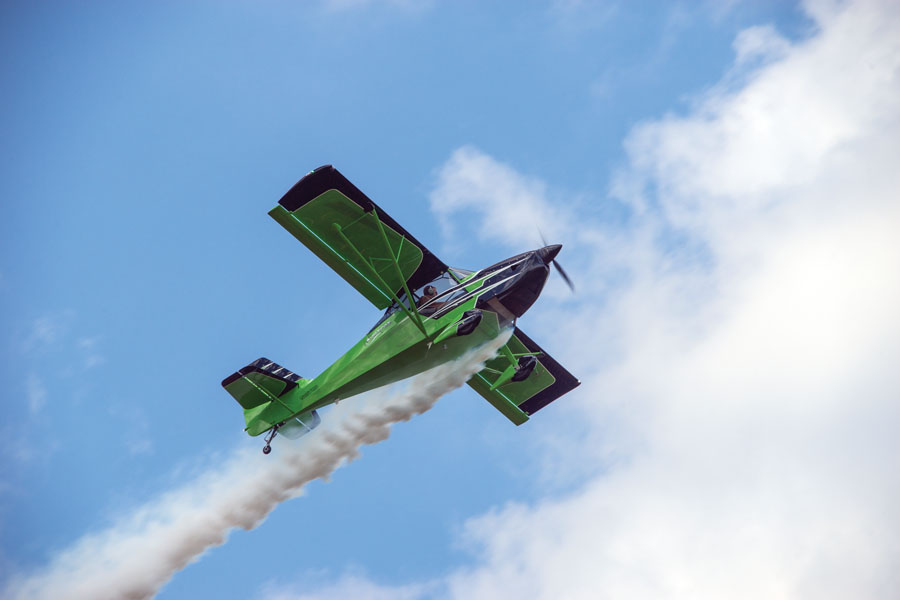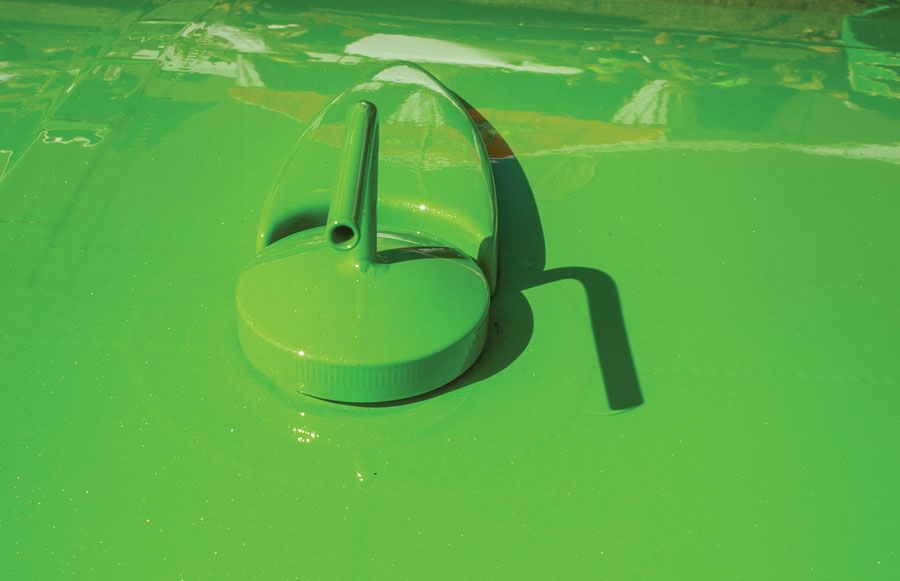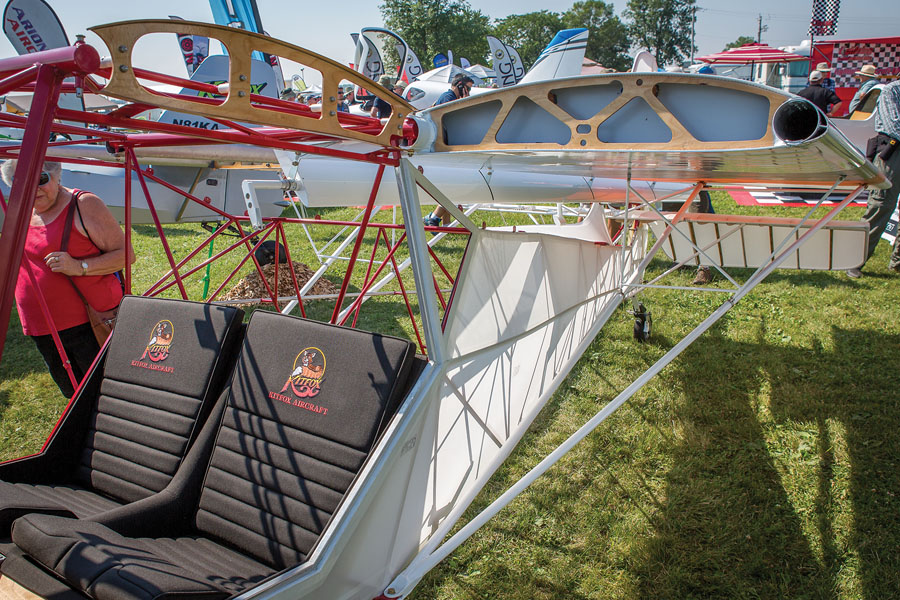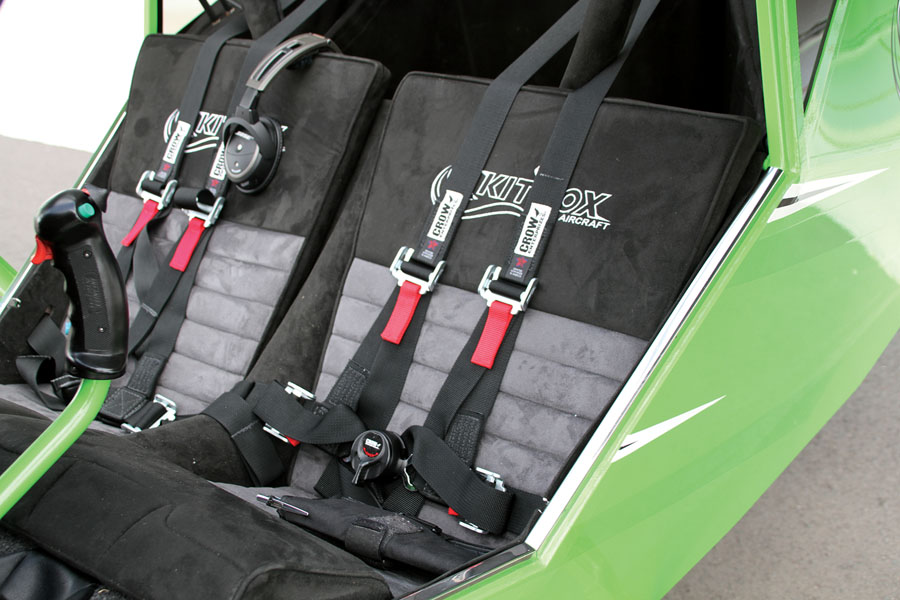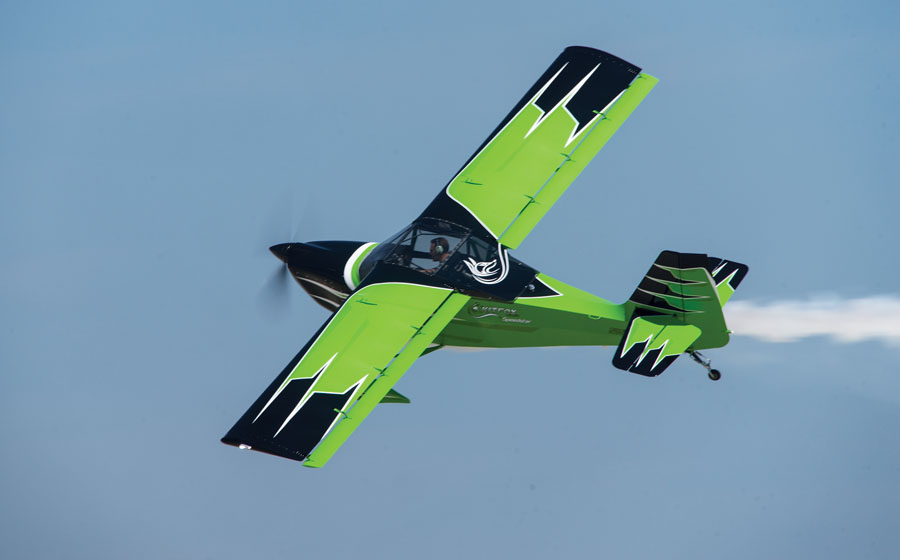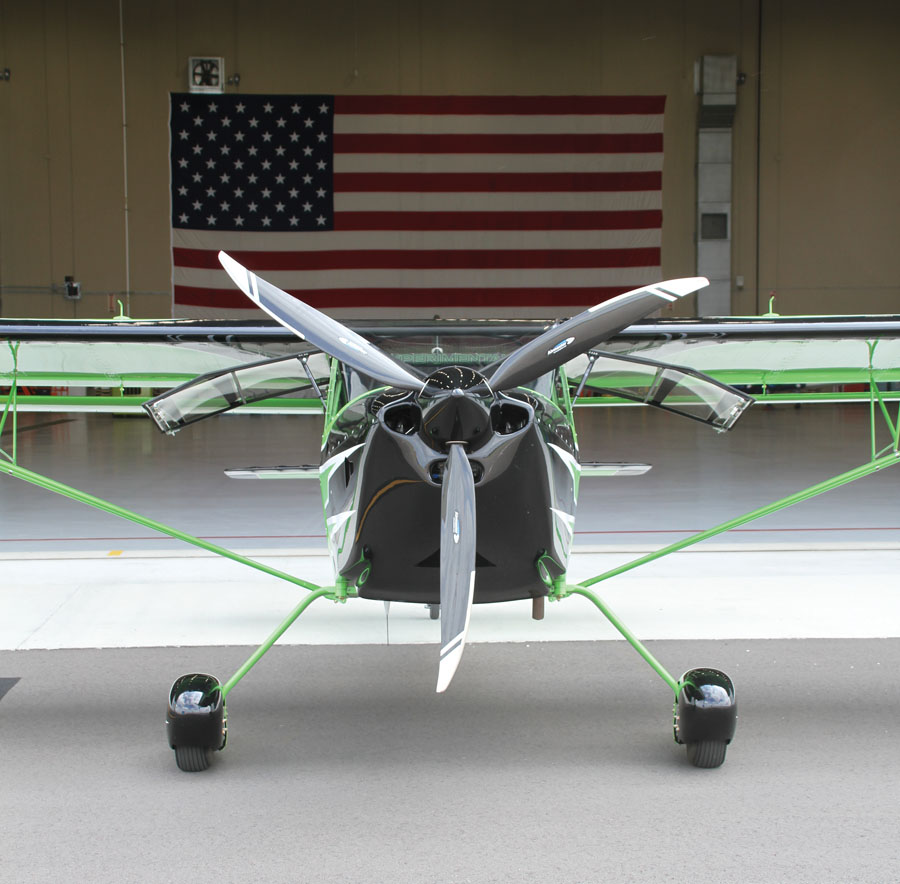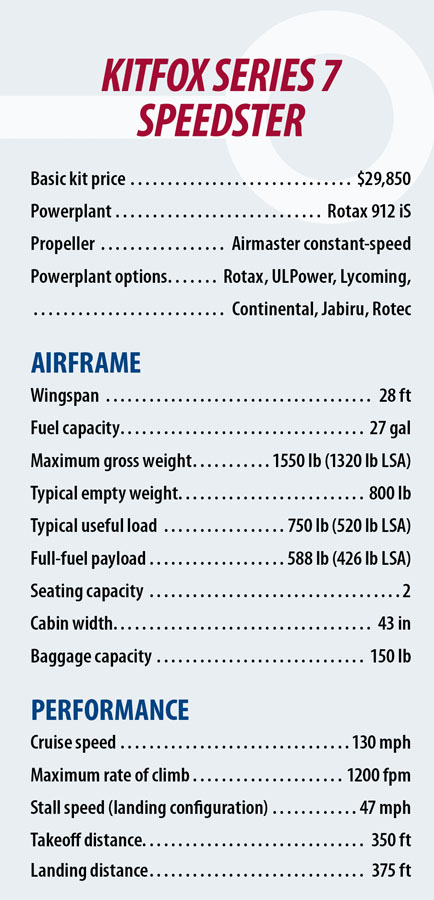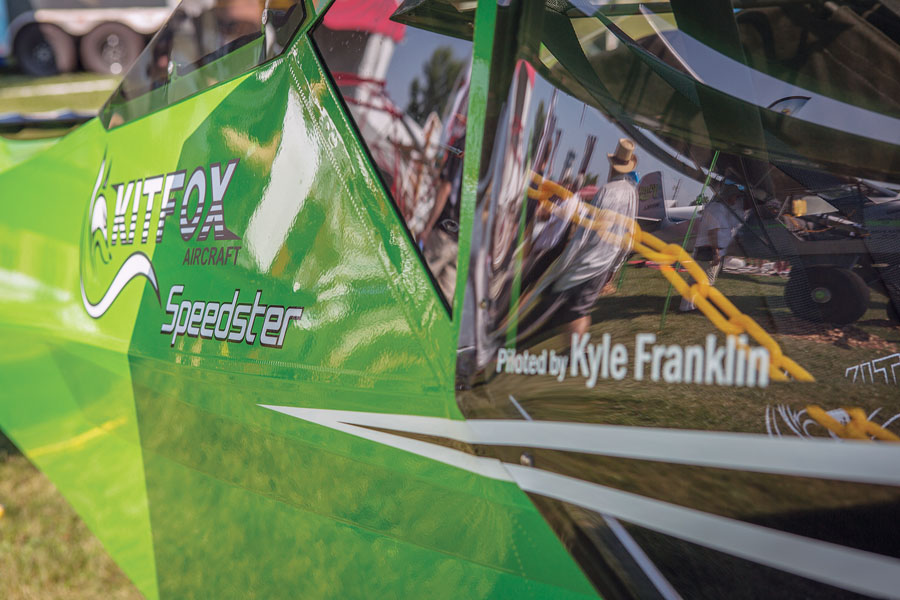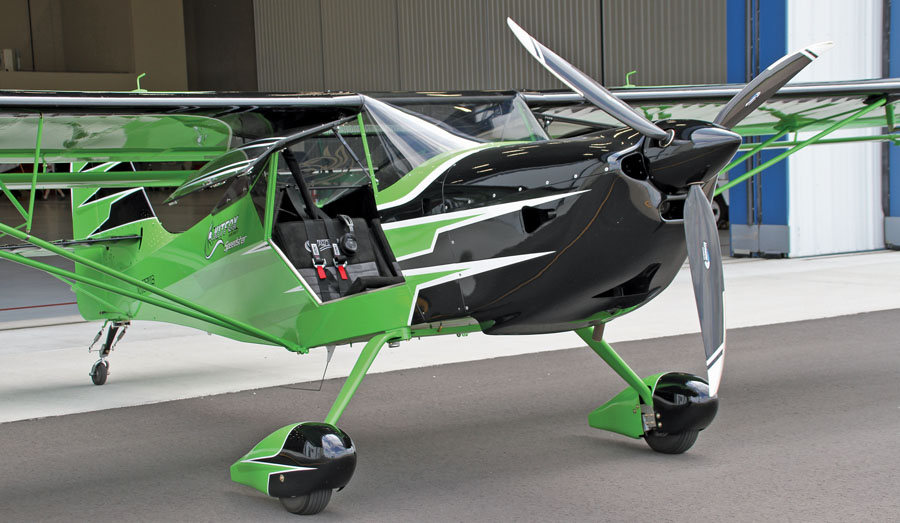America’s car culture has inculcated consumers of almost every conceivable product to expect, desire, and demand a new model every year. “Do we really need to do that?” asked John McBean, president of Kitfox Aircraft. “Ford comes out with a new F-150 pickup every year, but it is still an F-150. It’s not a new model. It is the same structure with a few enhancements,” such as accessories and cosmetic differences.
When McBean and his wife, Deborah, acquired the company 13 years ago, instead of competing in the annual arena of cosmetic chicanery, Kitfox focused on the evolutionary improvement of the airframe that is now the core of the Series 7. The fuselage for all is the same, said McBean. The S7 Super Sport is the base model. The slow-landing backcountry STi has a bigger wing and wheels, and the eponymous Speedster has shorter wings and smaller wheels.
Unlike the other Series 7 Kitfox wings, the clipped Speedster wing has symmetrical flaperons that increase speed and roll rate.
Reintroducing the go-fast Kitfox was part of their plan, said McBean, and they executed the original concept using the Series 7 airframe. Kitfox introduced the S7 Speedster at EAA AirVenture Oshkosh 2017 with airshow pilot Kyle Franklin at the controls. “Kyle said he was just 13 when his dad [Jimmy Franklin] introduced the original Speedster” at EAA Oshkosh in 1992, said McBean, and having Kyle in the S7’s cockpit was part of the plan.
To create the original Speedster, Kitfox clipped 3 feet off the span of a Series 4 Kitfox and replaced the wing’s drooped tips with sheared ends. Reworked flaperons delivered the desired control feel and high-speed effectiveness, and new fairings smoothed the slipstream as it passed strut attachments and the radiator.
The fuselage is common to all Series 7 Kitfox iterations. It is the wings and wheels attached to it that separate one model from the next.
Wheel pants covered smaller wheels, a thicker, more streamlined windshield reduced cockpit clatter, and a new smooth cowl replaced the round bump cowl, which was an option. The tail feathers featured an airfoil outline, gap seals, and electric trim. Combined, all of the airframe changes delivered a Series 4 Speedster that cruised at 125 mph.
Today’s Speedster followed the same path from its backcountry roots. Starting with an S7 Super Sport, they clipped the wings, reducing its 32-foot span to 28 feet. That contributed the most to the airplane’s quicker roll rate, said McBean. New flaperons with a symmetrical airfoil contributed to the roll rate and made the controls lighter and crisper.
A symmetrical airfoil was standard on the Series 4, 5, and 6 flaperons. The Series 7, which debuted in 2002 and evolved to the S7 Super Sport in 2006, introduced a new flaperon assembly and the asymmetrical flaperon airfoil that increased stability, lowered the stall speed, and provided a bit more positive feedback in the control system, McBean explained. “Unfortunately, the previous company destroyed the tooling for the symmetrical flaperons.”
Retooling and making new fixtures was one of the first things the McBeans did after acquiring the company “to support the existing fleet with symmetrical flaperons and to have them available” in the future.
Like all S7s, the Speedster has a steerable tailwheel. The difference is, the Speedster’s is smaller.
Working with Grove Aircraft Landing Gear Systems, they gave the S7 Speedster streamlined aluminum main landing gear and replaced the 600-6 wheels with smaller 500-5 wheels and tires that wear wind-cheating pants. Streamlined lift struts also contribute to the 10-mph increase to the S7 Super Sport’s 120-mph cruise speed (with a 100-hp Rotax 912).
Kyle Franklin flies a stock Speedster, said McBean. It has no inverted oil or fuel system. The only modification was a high-dollar smoke system that really produces. For communication and navigation, there’s a Garmin G3X suite of avionics that includes a two-axis autopilot and electric trim.
A Garmin G3X with two-axis autopilot and electric trim dominates the instrument panel in the Speedster Kyle Franklin put through its aerobatic paces. The circled note on the card that lists the show’s maneuvers says, “Don’t think. Just fly!”
Acknowledging that any airplane is capable of aerobatics, McBean emphasized that Kitfox does not market the Speedster as an acro aircraft. “The federal aviation regulations [91.303] define aerobatic flight as any intentional maneuver that involves an abrupt change in an airplane’s attitude, an abnormal attitude, or abnormal acceleration not necessary for normal flight.” The regs further define aerobatics as a bank angle of 60 degrees or more and pitch attitudes of 30 degrees or more.
Then there are the structural limits of the airplane. The G-load limits for a certified acrobatic airplane are +6 and -3. The ultimate load tolerance of 150 percent raises these sustained load limit factors to their ultimate loads of +9 and -4.5. “This allows a pilot to mess up an aerobatic maneuver” without dismembering the structure, said McBean. The Series 7 will sustain a G load of +3.8 and -1.52 “all day long, and its ultimate load is the same as a normal category aircraft certified under Part 23.”
Franklin’s Surprise
When Kyle Franklin first flew the Speedster, it surprised him. “I wasn’t expecting it to roll as fast as it does, or to turn as fast as it does. It is a very aggressive airplane for that little 100-hp Rotax 912 iS that’s on the front of it. It is not like a Pitts or Decathlon, big and bulky. It’s small, fast, nimble, and versatile; a blast to fly, it is one of the coolest, funnest airplanes I’ve flown in a long time.”
The Speedster is just like any other airplane, said Franklin, reiterating McBean’s comments relative to three-dimensional flight. “You just can’t jump in it and do aerobatics with it.” It is not the right airplane for learning the basics of aerobatic flying.
Guided by a lifetime of aerobatic experience and the hypersensitive seat of his pants, Franklin created the Speedster’s airshow routine by drawing from his catalog of low-load maneuvers. Stuck to the Speedster’s panel is a list of the routine’s maneuvers. It starts with a snap roll and a half. “I do a few things with the airplane that I would not recommend that other people do,” he said, “like snap rolls. There are some tricks involved to get it to do snap rolls safely.”
Kyle Franklin flies a stock Speedster for airshows. The only modification is a smoke system that really produces.
A card on the Speedster’s panel also lists other maneuvers:
- Avalanche (a snap roll at the top of a loop)
- Hammerhead and snap
- Humpty (pull to a vertical line with a pull over the top and then back down)
- Four-point roll
- Cuban 8
- Roll
- Half Cuban
- Loop
- Horizontal 8
- Barrel roll
- Knife edge
- Photo pass
- Land
The card’s final entry says, “Don’t think. Just Fly!”
The list of maneuvers is not always in the order Franklin flies them. Given the wind and weather, every performance is different, he said. “If I’m diving down and need 140 to start a loop, and I’ve only got 120, but my card says I need a loop here, but I don’t have the speed for that, I’m gonna do the four-point roll and get the energy on the back side of that to do the loop.”
For lack of a better explanation, Franklin flies with vast seat-of-the-pants experience that includes an airplane’s performance requirements. “Knowing an airplane’s numbers is important, but so is knowing the airplane and your abilities, and staying within those envelopes. The airplane will talk to you, if you listen.”
Without an inverted oil and fuel system, negative-G maneuvers interrupt the flow of life-giving fluids to the engine. “And that Rotax quits quickly! It is not like having a carburetor where it cuts out and then comes back to life. With that engine, when it quits, it quits—instantly! You have to go through the starting procedure to bring it back to life. Depending on your altitude,” Franklin said, with a knowing chuckle, “that can get kinda interesting.”
Attention to details, like this fuel filler fairing, is one example of how Kitfox is continuously improving its airplanes.
Powerplant Options
Builders of the Series 7 family have a choice of more than a dozen different powerplants, from Lycomings and Continentals to Rotax and Jabiru, and even a Rotec Radial, which properly fills the Kitfox’s iconic round bump cowl. The engine-specific mounts connect to the fuselage’s standard hard points. Firewalls and cowlings, round or smooth, are also engine specific.
Citing its excellent weight-to-power ratio, McBean said the Rotax 912 options seem to be the most popular choice, one accompanied by the “most comprehensive firewall-forward package we have.” In the same breath, McBean said the company does not promote one powerplant over the other.
“We want builders to pick the engine that best suits their flying needs. We want you to have all the information it takes to make educated decisions on an engine and avionics. We want you to have an engine out front that you’re happy with because a happy customer is our best salesperson. Beyond that, thank you for flying Kitfox.”
Folding wings are standard to all Series 7 Kitfox models, which make it easy to build and swap two sets of wings: long wings for backcountry fun and clipped Speedster wings for going places.
On the Speedster, an Airmaster electric constant-speed prop turns the Rotax’s 100 horsepower into thrust based on the phase of flight selected on the panel-mounted control. “It’s a pilot-proof constant-speed prop, and I’ve been trying to get it approved for Sport Pilot,” said McBean.
“The numbers for each phase of flight are programmed for the engine combination,” said McBean. “An electric brush system reads the rpm and sends it to the system to maintain it. With the Rotax it is 5700 rpm for takeoff and 5400 rpm for cruise. It will hold those settings all day long, and you never have to worry about an overspeed.”
Four-point seat belts and shoulder harnesses hold people firmly in their upholstered fiberglass bucket seats in the 43-inch-wide cabin.
Certified Benefits
By the mid-1990s, Kitfox had evolved the Series 4, the foundation of the original Speedster, to its limit. So the company froze that design (it is still available, said McBean, and it sells mostly overseas because it works nicely with Europe’s advanced ultralight rules) and started with a clean-sheet design.
The Kitfox Series 5 that appeared on that blank sheet was originally slated for Part 23 certification, said McBean. That’s why it, and its successors, the Series 6 and Series 7, all meet the G-load limits of normal category aircraft. Working with the FAA, the company progressed beyond the structural testing point of the certification process. Constantly reevaluating the return on the Part 23 investment, Kitfox decided to stick with the homebuilt market.
The Speedster is not marketed or certified for acrobatic flight, but airshow pilot Kyle Franklin says the quick and nimble airplane “is a blast to fly.”
With a longer fuselage and wider cockpit, the Series 5 came to that market as the Vixen, Outback, and Safari, which introduced tricycle gear and different gross weights. Kitfox married these models and their options in the Series 6 in 2000. As part of this evolutionary development, the fuselage includes the hard-point mounts that allow builders to convert their airplanes from taildraggers to tricycle landing gear. It is a capability that continues on the Series 7.
Sport Pilot was gestating in the legislative labyrinth at this time, said McBean. As initially proposed, the Light Sport Aircraft (LSA) gross weight was 1232 pounds. “We looked at it really hard, but the Series 6 didn’t quite fit. With a 1550-pound gross weight, it was a little on the heavy side for Sport Pilot, and we’d have to lose too much to meet 1232.”
Standing face-to-face with the Speedster, it is clear that Kitfox has not missed any opportunity to streamline the design to squeeze every last mph out of the Series 7 airframe.
During this time, Kitfox was also working on a design based on the Series 6 that would accept a number of different powerplants. “It was called the Kitfox Sport,” said McBean. “This was before Sport Pilot was approved; when it came out with a 1320-pound gross weight, we could make the Series 6, with its wider cockpit and longer fuselage that enabled full use of its 150-pound baggage capacity, fit that.”
Then 9/11 shut down aviation. “No one knew what was going to happen,” said McBean, with Sport Pilot or anything else. So Kitfox took what it had learned on the Sport, such as the common hard points that efficiently mated with the engine mounts for a number of different powerplants, and incorporated them as the Series 7. The aircraft also embodied its predecessor’s compliance with Sport Pilot requirements, giving builders not only a choice of powerplants and landing-gear configurations, but also gross weights.
As of our February conversation, McBean said there are roughly a half-dozen Speedsters under construction. In the S7 family, he said the STi is the biggest seller. “We sold out this year’s production run before the Christmas [2018] break, and we’re now taking production orders for February 2020. We’re three years out on our [factory-built] Special Light Sport Aircraft.”
Don’t be fooled or misled by the Speedster’s name. “It does well in the backcountry,” said McBean. “Its stall speed is up a bit,” but perspective comes with comparisons to other homebuilt and store-bought airplanes that play in the bush. McBean flies his Speedster out back often. His only change was to replace its small wheels with something larger, like 600-6.
“The Speedster cruises faster than the Super Sport and STi, and the STi lands a little slower, but they are all Series 7s.” In comparing their numbers, the Speedster gets off the ground in 350 feet. That’s more than double the 100-150 feet the STi needs, but only 60 feet more than the Super Sport. The landing roll differences are about the same. And there’s nothing stopping a builder from building a second set of wings, say the larger high-lift model on the STi. Builders can just as easily change the landing gear as well. Maybe the Series 7 is the ultimate mix and match airplane, pilot configurable for the flying mission at hand.




